#indigenous prisoners
Photo
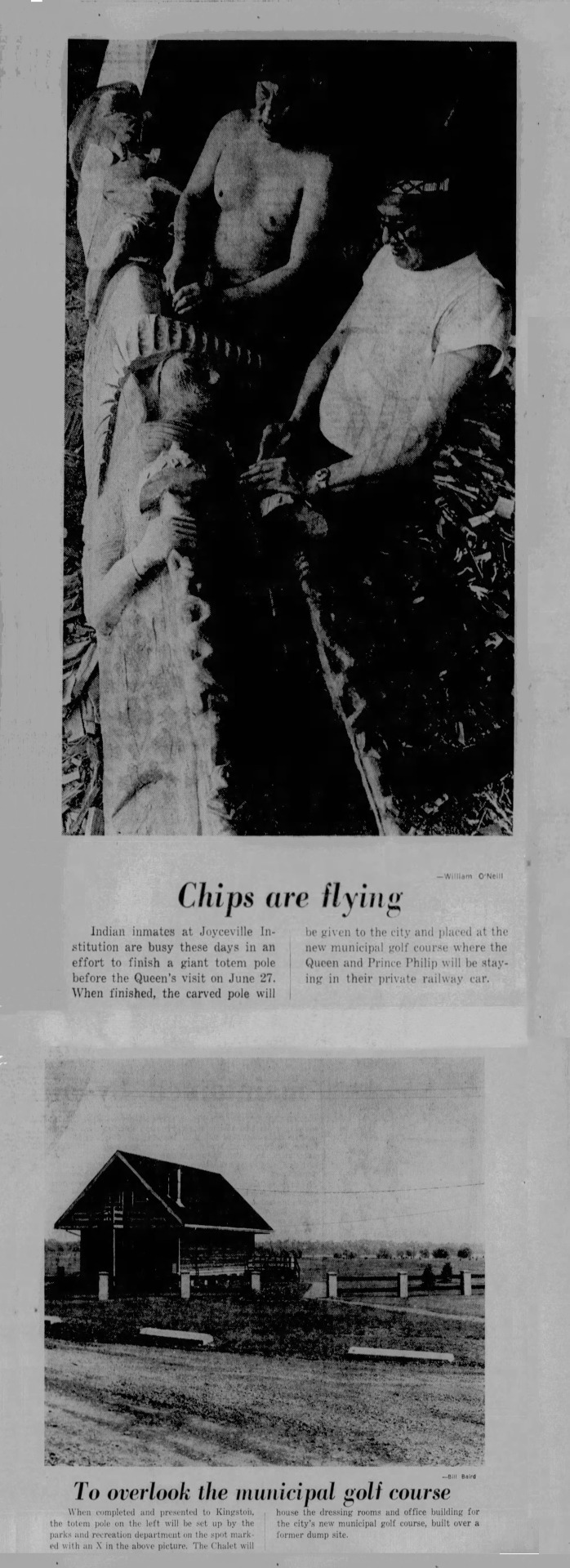
[The origin of the Belle Park totem pole in Kingston, Ontario, at least in part. Queen Elizabeth was visiting for the Kingston tercentenary, and this totem pole was one of a number made at that time by Indigenous inmates at Collin's Bay Penitentiary and Joyceville Institution, two medium security federal prisons in Kingston.
Who the carvers were, the inception of the project, whose idea was it, how it fits into the broader activities of the Native Brotherhood at Joyceville, all of that is still a little hazy to me - but the hard work of local researchers has resulted in a stupendous resource available here online: https://belleparkproject.com/the-place/totem-pole. It answers a lot of my questions and features the words of many of the carvers - a useful corrective to the Whig's slant here.
The Advance - the inmate newspaper at Joyceville - has a notice in June indicating OECA Channel 19 interviewed the totem pole carvers on May 18, for broadcast July 1 & 2 in Toronto. The Advance praises the tercentenary project as a "significant symbol of the role Native People have played in the evolvement of the Canadian people." Haven't read earlier issues yet to get a better feel.
In terms of outside newspaper coverage, there is this dramatic image from April 17 crediting MP Flora MacDonald for getting the wood shipping from BC. Which is all about how great the local Conservative MP is, not the carvers.
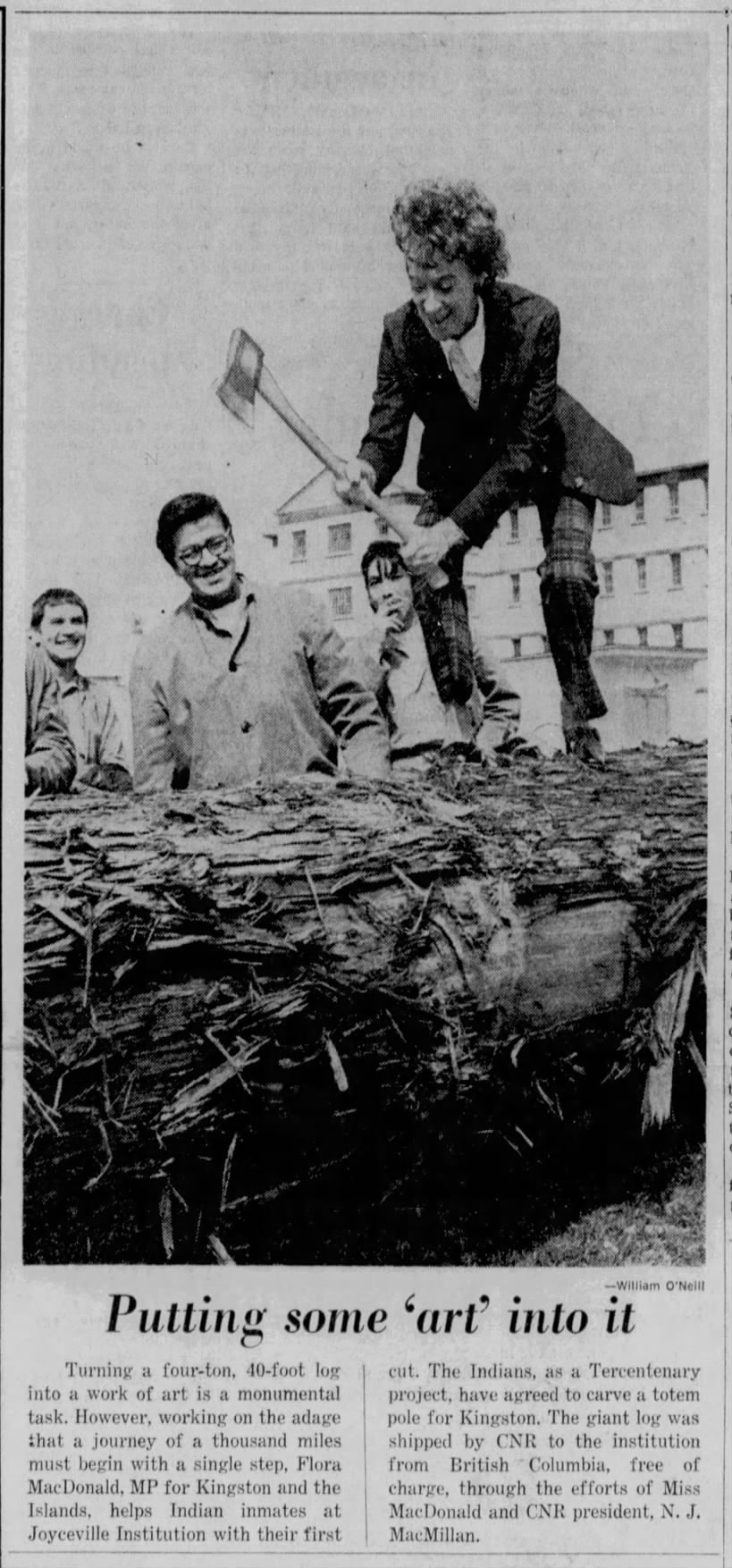
In terms of the broader context, Seth Adema's article “Native Brotherhoods and Decolonization in Ontario's Federal Prisons' is pretty crucial, and available for free online if you search.
The totem pole is still on the Belle Park golf course, which has become during the pandemic a tent encampment for Kingston’s growing unhoused population. The city keeps trying to evict them all - presumably to re-open the golf course - while local solidarity activists try and stop it. Belle Island, where the park is partly located, is a site with great significance to the local First Nations, but was of course a garbage dump at one point because this is Canada...]
///
Captions for top images:
"Chips are flying," Kingston Whig-Standard. June 8, 1973. Page 4.
----
Indian inmates at Joyceville Institution are busy these days in an effort to finish a giant totem pole before the Queen's visit on June 27. When finished, the carved pole will be given to the city and placed at the new municipal golf course where the Queen and Prince Philip will be staying in their private railway car.
(Photo by William O'Neill)
"To overlook the municipal golf course," Kingston Whig-Standard. June 8, 1973. Page 4.
----
When completed and presented to Kingston, the totem pole on the left will be set up by the parks and recreation department on the spot marked with an X in the above picture. The Chalet willhouse the dressing rooms and office building for the city's new municipal golf course, built over at former dump site.
(Photo by Bill Baird)
Captions for middle image:
"Putting some art into it," Kingston Whig-Standard. April 17, 1973. Page 1.
===
Turning a four-ton 40-foot log into a work of art in a monumental task. However working on the adage that a journey of a thousand miles must begin with a single step Flora MacDonald MP for Kingston and the Islands helps Indian inmates at Joyceville Institution with their first cut. The Indians as a Tercentenary project have agreed to carve a totem pole for Kingston. The giant log was shipped by CNR to the institution from British Columbia free of charge, through the efforts of Miss MacDonald and CNR president MacMillan.
#kingston ontario#totem pole#tercentenary#joyceville institution#prisoners#indigenous prisoners#first nations#indigenous people#canadian history#native brotherhood#belle park#indigenous history#royal visit#life inside#history of crime and punishment in canada#crime and punishment in canada
8 notes
·
View notes
Text
Good News - June 15-21
Like these weekly compilations? Tip me at $Kaybarr1735! And if you tip me and give me a way to contact you, at the end of the month I'll send you a link to all of the articles I found but didn't use each week!
1. Victory for Same-Sex Marriage in Thailand

“Thailand’s Senate voted 130-4 today to pass a same-sex marriage bill that the lower house had approved by an overwhelming majority in March. This makes Thailand the first country in Southeast Asia, and the second in Asia, to recognize same-sex relationships. […] The Thai Marriage Equality Act […] will come into force 120 days after publication in the Royal Gazette. It will stand as an example of LGBT rights progress across the Asia-Pacific region and the world.”
2. One of world’s rarest cats no longer endangered

“[The Iberian lynx’s] population grew from 62 mature individuals in 2001 to 648 in 2022. While young and mature lynx combined now have an estimated population of more than 2,000, the IUCN reports. The increase is largely thanks to conservation efforts that have focused on increasing the abundance of its main food source - the also endangered wild rabbit, known as European rabbit. Programmes to free hundreds of captive lynxes and restoring scrublands and forests have also played an important role in ensuring the lynx is no longer endangered.”
3. Planning parenthood for incarcerated men
“[M]any incarcerated young men missed [sex-ed] classroom lessons due to truancy or incarceration. Their lack of knowledge about sexual health puts them at a lifelong disadvantage. De La Cruz [a health educator] will guide [incarcerated youths] in lessons about anatomy and pregnancy, birth control and sexually transmitted infections. He also explores healthy relationships and the pitfalls of toxic masculinity. […] Workshops cover healthy relationships, gender and sexuality, and sex trafficking.”
4. Peru puts endemic fog oasis under protection
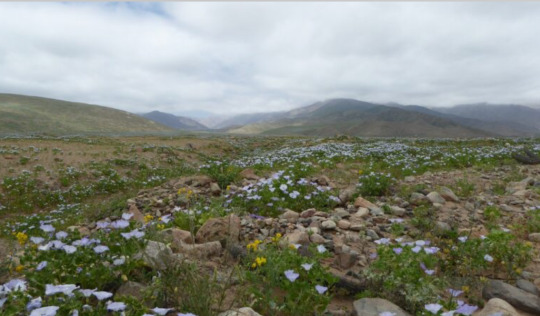
“Lomas are unique ecosystems relying on marine fog that host rare and endemic plants and animal species. […] The Peruvian government has formally granted conservation status to the 6,449-hectare (16,000-acre) desert oasis site[….] The site, the first of its kind to become protected after more than 15 years of scientific and advocacy efforts, will help scientists understand climatic and marine cycles in the area[, … and] will be protected for future research and exploration for at least three decades.”
5. Religious groups are protecting Pride events — upending the LGBTQ+ vs. faith narrative

“In some cases, de-escalation teams stand as a physical barrier between protesters and event attendees. In other instances, they try to talk with protesters. The goal is generally to keep everyone safe. Leigh was learning that sometimes this didn’t mean acting as security, but doing actual outreach. That might mean making time and space to listen to hate speech. It might mean offering food or water. […] After undergoing Zoom trainings this spring, the members of some 120 faith organizations will fan out across more than 50 Pride events in 16 states to de-escalate the actions of extremist anti-LGBTQ+ hate groups.”
6. 25 years of research shows how to restore damaged rainforest
“For the first time, results from 25 years of work to rehabilitate fire-damaged and heavily logged rainforest are now being presented. The study fills a knowledge gap about the long-term effects of restoration and may become an important guide for future efforts to restore damaged ecosystems.”
7. Audubon and Grassroots Carbon Announce First-of-its-Kind Partnership to Reward Landowners for Improving Habitats for Birds while Building Healthy Soils

“Participating landowners can profit from additional soil carbon storage created through their regenerative land management practices. These practices restore grasslands, improve bird habits, build soil health and drive nature-based soil organic carbon drawdown through the healthy soils of farms and ranches. […] Additionally, regenerative land management practices improve habitats for birds. […] This partnership exemplifies how sustainable practices can drive positive environmental change while providing tangible economic benefits for landowners.”
8. Circular food systems found to dramatically reduce greenhouse gas emissions, require much less agricultural land
“Redesigning the European food system will reduce agricultural land by 44% while dramatically reducing greenhouse gas emissions from agriculture by 70%. This reduction is possible with the current consumption of animal protein. “Moreover, animals are recyclers in the system. They can recycle nutrients from human-inedible parts of the organic waste and by-products in the food system and convert them to valuable animal products," Simon says.”
9. Could Treating Injured Raptors Help Lift a Population? Researchers found the work of rehabbers can have long-lasting benefits
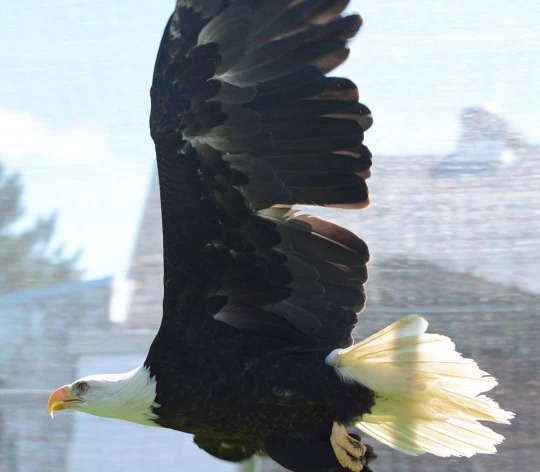
“[“Wildlife professionals”] tend to have a dismissive attitude toward addressing individual animal welfare,” [… but f]or most raptor species, they found, birds released after rehabilitation were about as likely to survive as wild birds. Those released birds can have even broader impacts on the population. Back in the wild, the birds mate and breed, raising hatchlings that grow up to mate and breed, too. When the researchers modeled the effects, they found most species would see at least some population-level benefits from returning raptors to the wild.”
10. Indigenous people in the Amazon are helping to build bridges & save primates
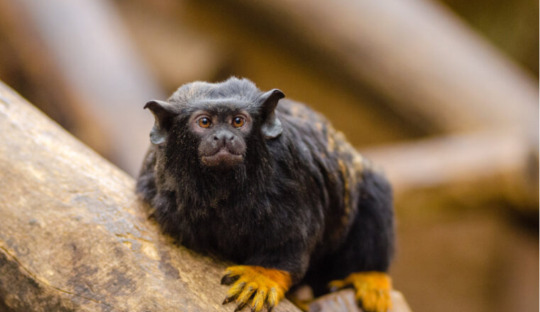
“Working together, the Reconecta Project and the Waimiri-Atroari Indigenous people build bridges that connect the forest canopy over the BR-174 road[….] In the first 10 months of monitoring, eight different species were documented — not only monkeys such as the golden-handed tamarin and the common squirrel monkey (Saimiri sciureus), but also kinkajous (Potos flavus), mouse opossums (Marmosops sp.), and opossums (Didelphis sp.).”
Bonus: A rare maneless zebra was born in the UK
June 8-14 news here | (all credit for images and written material can be found at the source linked; I don’t claim credit for anything but curating.)
#hopepunk#good news#lgbtq#gay rights#gay marriage#same sex marriage#thailand#lynx#big cats#cats#endangered species#endangered#sex education#prison#peru#conservation#habitat#religion#pride#faith#pride month#lgbt pride#compassion#rainforest#birds#nature#climate change#wildlife rehab#wildlife#indigenous
1K notes
·
View notes
Text
The 50th anniversary of AIMs (American Indian Movement's) occupation at Wounded Knee is coming up, so the Lakota People's Law Project is leading another push to free an AIM activist who was wrongly convicted of killing two federal agents in 1975- Leonard Peltier. He was convicted on false evidence and false testimony and sentenced to two life sentences. He is now 78.
LPL has a formatted email up on their website now which you can personalize and send to Biden to ask for clemency. (Please personalize emails like this so it doesn't get filtered as spam. Just move some words around, add some, take some, you don't have to write a whole email.) Please pass this around.
#leonard peltier#aim#american indian movement#leonard peltier defense committee#wounded knee#protest#occupation#political prisoners#petition#president biden#clemency#action#lakota#ojibwe#advocacy#native rights#indigenous people#legal action#federal prison#indian boarding schools#boarding school#history#bishop desmond tutu#nelson mandela#dalai lama#chase iron eyes#legal defense#activists
3K notes
·
View notes
Text
You Cannot Create A Solarpunk Future Under Capitalism

I am feeling like a broken record, but I just need to make this clear once more: No, Solarpunk in any form is not possible under capitalism. If you think it is, you either fail to understand Solarpunk, or you don't get what capitalism even means.
Technically I wrote about this already almost exactly a year ago. Let me reiterate it again, though: Solarpunk at its core is build around a couple of ideas. Those are:
Living in relative harmony with our environment, rather than destroying it. (Which includes using renewable energies.)
Decolonialism.
Social justice and the same rights, chances and possibilities for all people.
Neither of those three points is archievable under capitalism, as the end goals of capitalism are opposed to each of them.
Let me go through each of them.
Environmental Sustainability is not archievable under capitalism.
This is the point people tend to argue about the most. Because they will go: "But if the renewable energy sources are cheaper than fossil fuels, the capitalist will see more possibilities to make money with it." Well, do I have news for you: A variety of renewable sources, such as solar and wind power, are already a lot cheaper than fossil fuels and yet somehow the capitalist argue against using them. Care to explain that? No? Well, I'll do it for you. (Technically already did in that blog last year.)
See, when someone's net worth is listed somewhere, most of them actually do not have billions of dollars on their bank accounts. And no, they also do not swim in gold coins. Instead their net worth comes from calculating how much money they would be able to make if they sold all thier assets. A lot of those assets are shares in companies they have, as well as stuff like their fancy houses, fancy cars, fancy private jets and fancy yachts. Most billionaires have not more than a couple tens million dollars in liquid money, meaning money they can just spend. If they wanna buy something that is more expensive, they will usually go to a bank, say: "Look at all the stuff I have. I wanna buy myself more stuff. Gimme money?" And the bank will go: "Of course, Sir Billionaire, here you go. Have a nice 10 billion dollars."
And this is where the issue arrises: Most of the billionaires who are investing in the energy market, have already invested billions in fossil fuels. Be it by owning shares of fossil fuel companies, or by owning mines, oil rigs, power plants and the like. And this puts them into a silly little position: Even if they wanted to make more money through renewables, they cannot without harming themselves. Because in the moment that renewables become even more viable than they already are, fossil fuels lose their viabilities - and hence all the assets they hold in fossil fuels lose their value in an instant. The billionairs know that. The banks know it, too. Which is why banks do not want to give the fossil fuel billionaires money for that, even if they ask.
And that is only on the energy-generating side of it. If you go into the other stuff that harms our environment... Simply put: Public transport will never make as much money, as selling everyone their own car. And plastics are just so much cheaper than any alternatives. And the companies need fast fashion, because they won't make as much money, if folks only go buying new clothes every ten years.
Capitalism is build on the exploitation of the environment.
You cannot archieve decolonialization under capitalism.
Let's talk about the call to decolonize next. This is even easier explained: Capitalism is build on colonialism. And contrary to what you might have been told in school, colonialism has never ended. Most indigenous folks never got their ancestral land back - or have to fight to remain on it to this day. The most notable examples you know off might be indigenous people on their land (at times the land they originally had been forced onto after their ancestral land had been stolen from them) fighting pipelines that the capitalists want to put onto that land. That is colonialism.
In fact a lot of the raw material we use to power capitalism is produced on stolen land or is moved across stolen land to be financially viable. Be it oil springs, that can be found there. Or be it mines. That is both mines that produce coal, but also mines that are used to produce lithium and other materials used in batteries of electric cars. These raw materials should technically belong to the indigenous people from whose land those materials are sourced. And we do know for a fact that some of them will prefer to leave those materials in the ground. Maybe because of the harm to the environment that mining for them creates. Maybe because the land is sacred to them. Maybe because some of them just do not care about cheap electric cars.
It is more than that, of course. Because colonialism also allows for slave labor. And yes, I mean slave labor. Like classical slave labor where people are pressganged into laboring in those mines, or in other factories, where they are not paid at all - or are paid in breadcrums. The reason that the global south is so abhorently poor, even though most of the raw materials powering our world are found there, is, that the people in the global south are exploited, while the land is often owned by people from the global north, who either got it through colonialism - or by buying it from someone who got it through colonialism.
And once again: The profit motive of capitalism is directly opposed to decolonizing - and because of that it won't happen. Capitalism is built on colonial exploitation.
You cannot archive social justice under capitalism.
Capitalism as a system was invented for one reason and one reason alone: To allow former nobility, who were close to lose their power and influence in a Europe of anti-royal revolutions, to hold onto the power and influence and veil it underneath the idea of meritocracy. Basically saying: "Everyone gets what they deserve based on the work they got in." Obviosly they got the most, because they owned the land that everyone was working and living on. And then they did their best to brainwash everyone into believing this - at which they actually succeeded.
Here is the thing: Capitalism needs an underclass to exploit. Sure, a good chunk of that exploitation will happen in other countries, where the poor white middleclass folks do not need to see them toil, but some of that exploitation simply cannot be done in those other countries. At times because the work physically needs to happen in the western nations - stuff like road contruction, general contruction work, cleaning and such are an example of this. And at times because some things might be time critical, cannot be transported that far and stuff like that - like farm work in some cases, or also all the Amazon warehouse stuff. Oh, and all those fastfood jobs belong into this area. Stuff that is paid minimum wage and exploited to no end.
And then there is of course prison labor in the US, which once again is just slavery.
And all of that does not even go into the care and nursing work that is either underpaid by a ton when it is happening on the open market (like in hospitals, schools, kindergardens and other care facilities) - or is happening completely for free. Mosten done by women, who will care for both children, as well as elders and disabled family members for free.
The true endgoal of capitalism is to turn the labor of the lower classes into money and value for the upper class to hoard like bloody dragons. As such capitalism will never be compatible with any sort of equal rights and equal chances.
Those three aspects are truths that just cannot be changed. Capitalism will never be able to create any sort of justice, equal rights, or sustainability. It is not in the interest of capitalism to do so, either.
#anti capitalism#anarchism#solarpunk#lunarpunk#cyberpunk#late stage capitalism#fuck capitalism#socialism#communism#decolonization#sustainability#land back#indigenous rights#anti prison
223 notes
·
View notes
Text
I'm gonna tell you guys something you don't want to hear, probably.
But in order to achieve equality, you NEED to stop seeing losing the custody of your kids as the moral failure to end all moral failures.
Native, brown and black families lose custody of their kids for the sole crime of being systematically disenfranchised.
Disabled (both mentally and physcially) folks lose their kids even when they've proven time and time again they're as perfectly capable of taking care of a child as anyone else.
Women lose custody of her children to their abusive husbands all time
If you accept the premise that both prison and psychiatry as institutions are inherently vulnerable to corruption to serve the privileged, then you must agree on this too
86 notes
·
View notes
Text
By Leonard Peltier
I have fought for my freedom every single day of these past 48 years.
You, my people, my supporters, my family in a very real way, lift my spirit and enable me to hold fast to the beliefs they want me to denounce. You get me through these hours that last for days or years.
Keep fighting. Fight the parasitical influence of colonialism. Fight the lies, the greed, the corruption of the oppressor. Fight for the survival of our people.
69 notes
·
View notes
Text
Free Leonard Peltier
Y'all, the US has kept Leonard Peltier, an Indigenous American activist and leader imprisoned on false charges for decades, he is one of the longest held US political prisoners still held by the US regime. Just yesterday what will likely be his last parole was herd. We all need to take a stand to support Leonard if he has any hope of getting released.
youtube
#free leonard peltier#indigenous#american indian movement#land back#American regime#political prisoners#native american#native American rights#solidarity#anarchism#socialism#marxism#marxism leninism#Marxism Leninism Maoism#Youtube
25 notes
·
View notes
Text

Ayiti 1805
#ayiti#1805#toussaint louverture#queen nanny maroons#jean jacques dessalines#queen aminarenas#caribbean#africa#melanin#melanated#haiti#haitian#aboriginal people#indigenous#olmecs#dominican#kassav#zouk music#free the political prisoners#free the land#marcus garvey#jamaica#black man#black woman#black children#black economics
13 notes
·
View notes
Text
introductory reading list for political education. covers:
political prisoners
Black labor and socialism
colonialism/imperialism
international socialism
feminism and socialism
eco-socialism
peoples histories
Black liberation and pan africanism
Indigenous liberation
Palestine and anti-zionism
gender and sexuality
disability justice
cultural work
—
🚨 want more materials like these? this resource was shared through BFP’s discord server! everyday, dozens of links and files are requested and offered by youth around the world! and every sunday, these youth get together for virtual teach-ins. if you’re interested in learning more, join us! link in our bio! 🚨
#resources#bipoc#political prisoners#Black liberation#socialism#anti capitalism#colonialism#imperialism#intersectional feminism#ecosocialism#pan africanism#indigenous#palestine#anti zionism#gender#sexuality#disability justice#culture#free palestine#israel
77 notes
·
View notes
Text
Considering tattoos became fashionable between European aristocrats in the late 19th century and Tsar Nicholas II himself had a massive dragon tattoo on his right arm (that he got done during a trip in Nagasaki in the early 1890s), it's not completely anachronistic to imagine Dmitri Karamazov as having one or multiple tattoos.
Do whatever you want with this information, I'm just saying.
#I feel the need to justify this knowledge of mine because I do hate monarchies but#I have many tattoos and I find the history of tattooing very interesting#many people think that back in the day in non-indigenous cultures tattoos were only a prisoners and sailors thing but no!#tattoos have always had artistic/spiritual/cultural value across the world and regardless of the time period#we have direct proof that humans have been getting tattoos since the Bronze Age how cool is that#anyway as for the tsar there are pictures of him with his sleeve rolled up where you can see the tattoo#and he talks about it in a diary of his#he said the tattooing session lasted from 9 pm to 4 am and while he liked the tattoo#he said going through that experience once discouraged him from ever getting tattooed again (lmao)#he wasn't the only tattooed member of the Russian royal family either#for some reason this piece of lore popped up in my mind again after years so here it is#the brothers karamazov#dmitri karamazov#mine
22 notes
·
View notes
Text
[T]he infamous Diable (Devil’s Island) [French prison in Guiana, South America] [...]. Seventy thousand convicts were sent to French Guiana between 1852 and 1938. [...] Alongside deportation of political prisoners [...], a [...] convict population [...] was sent to the bagne (common parlance for the penal colony) [...] as a utopian colonial project [...] via the contribution convict labour would make towards colonial development in French Guaina. However, [...] French Guiana [...] was predominantly used as a depository for the unwanted citizens of France and its colonies. The last remaining French and North African convicts were repatriated in 1953, whereas the last Vietnamese prisoners were not given passage home until 1954 [...].
[T]he same form of built environment and carceral technology [...] structures found on Con Dao [French prison in Vietnam] and [the French prison in Guiana] [were] built at almost the same time [...] to house the same convict populations (Vietnamese implicated in anticolonial struggles) [...]. Old world colonialism is thus displaced by new world imperialism. Both rely on the prison island and its cellblocks. [...]
---
The carceral continuities [...] throughout France’s penal colonies are supplemented by legal exceptionalism which works to redefine colonial subjects within shifting political contexts. [...] Many of the Indochinois convicts transported to the forest camps of French Guiana in 1931, including the Bagne des annamites, had originally been classed as political prisoners. The transfer was intended in part [...] to remove a number of anticolonial actors from Indochina. [...]
As political deportees sent to French Guiana were usually exempt from labour according to the political decree of 1850, this status had to be revoked to ensure the maximum labour force possible.
Consequently, those arrested on suspicion of specific acts of violence or property damage were reclassed as common criminals. Described by Dedebant and Frémaux (2012, 7) as “little arrangements between governors,” this was not simply a sleight of hand but written into legal codes. [...]
---
[M]any of the Vietnamese sent to French Guiana had to wait until the 1960s to be repatriated. [...] After their sentences were completed, convicts were not simply repatriated to France or other colonies.
A system of “doublage” intended to shore up colonial development meant they had to serve the same length of their sentence again on the colony. For those condemned to eight years or more, this became life. Opportunities for sustainable livelihood were limited in a territory possessing swathes of free convict labour. Worn out and sick from their time in the bagne, most of these men were unfit to work and relied on charity to survive. [...]
[T]he last living convict [of the Guiana penal colony] [...] died in Algeria in 2007 after being repatriated to Annaba. In an interview given in 2005, he claims that every night he dreams he is back in Cayenne: “when I think about it, I get vertigo, I spent my life there” [...].
---
All text above by: Sophie Fuggle. "From Green Hell to Grey Heritage: Ecologies of Colour in the Penal Colony". Interventions: International Journal of Postcolonial Studies Volume 24, Issue 6. 2022. Published online 8 April 2021. [Bold emphasis and some paragraph breaks/contractions added by me. Presented here for commentary, teaching, criticism purposes.]
#just arrest the activists and send them to the prison labor camp oh wait we arent technically legally allowed to force them to work#then just reclassify them not as political prisoners but instead as general criminals and then we can force them into slavery i mean labor#oh no wait now they finished serving their sentence and we cant force them into labor anymore#wait yes we can just change more rules so they cant go back home and have to work nearby#two or three or four birds with one stone#ecology#abolition#landscape#colonial#imperial#indigenous#multispecies#haunted#caribbean#tidalectics#archipelagic thinking#intimacies of four continents#carceral geography#geographic imaginaries
51 notes
·
View notes
Text
I'm inserting some of my own comments on a story with not a lot of information available, except that provided by a correctional officer - highly motivated to tell a very partial and anti-prisoner narrative. I am no expert - I've spoken very informally and casually to people who have done time or worked at Stony Mountain Penitentiary, but that's it. I await further information, or interviews with inmates or even staff outside the security apparatus about this incident.
From the Winnipeg Free Press, July 19, 2023:
"...a riot broke out in Stony Mountain Institution's exercise yard Monday. Corrections officers used live ammunition to break up the brawl; another inmate was sent to hospital with a gunshot wound. Colton Patchinose, 33, was pronounced dead shortly after RCMP officers from the Stonewall detachment arrived at the federal prison north of Winnipeg at 6:35 p.m. to help deal with the "large fight" that involved several "edged weapons." The prairie region president of the union that represents corrections officers said the officers fired multiple rounds as warning shots to try to quell the chaos that broke out before 6:30 p.m., striking an inmate, who remains in hospital.
"There was an outright riot," Union of Canadian Correctional Officers [UCCO] official James Bloomfield told the Free Press Tuesday. Bloomfield said an estimated 30 inmates were directly involved in the brawl, using homemade knives and spikes and blunt force weapons and "anything they could grab a hold of in that yard" to fight each other.
There was warning shots that were fired. That is not something that we do very often and it got to a point where there were "several warning shots fired," he said. "We did deploy a lot of pepper spray last night, as well, to try to get that group under control and get it all back to a safe place today." About 100 inmates were in the yard at the time, Bloomfield said.
[There is very clearly a lot more going on then the UCCO president is capable of articulating or understanding - that there was a need the night BEFORE this event to spray ranges in pepper spray raises some questions to me.]
...
"Definitely gang violence - that's what this is about, it is fuelled by the drug trade within the institution. This is what that results in, it is one of the most violent institutions in this country," he said. The union has been trying to push federal corrections officials to address violence and the drug trade in the prison but have not had much luck, he said.
['Gangs' in prison have a bunch of overlapping identifies and reasons for formation - including the tendency of CSC itself to identify any three individuals in an organization or group outside their sanction as a security threat group. The extent to which these gangs are connected to street gangs or organized crime in Winnipeg or elsewhere is hard to gauge from press statements. I'm sure it is a complicated issue. The gangs also serve as a way of organizing and controlling the flow of contraband into the prison, often with outside help. The Union head makes a big deal of 'throw-overs' - that is, contraband being thrown over the perimeter - though corrupt staff are also a major conduit as well as family visits. What drugs are being traded is left obscure as is the volume of this trade.]
////
From the CBC article, July 19, 2023:
"No correctional officers were physically injured but "as you can imagine, there's definitely mental health injuries that occur over the next day or two for witnessing a murder or for the stabbings that occurred," Bloomfield said.
"That's a very difficult situation to respond to, to deal with, to see. So over the next few days we'll be monitoring the staff and looking for symptoms and signs of stress injuries and mental health injuries."
[Again, a man died and many other prisoners were injured - their concerns and undoubtedly the desire of many uninvolved in this incident for safety and security don't really matter in this framing of the event. 'Trauma' as a way for the caretakers of power to avoid their own responsibility for causing it themselves, or the broader issues that bring violence to their door, is a really growing trend I've noticed...]
The incident was another example of a violent and unpredictable work environment for staff at the prison, which is being fuelled by gang activity and drugs, Bloomfield said.
"There has been a lot of violent activity at Stony Mountain for a very long time. We have a huge amount of drugs within that institution," he said.
"It is one of the highest throw-over institutions in the country, which means people throwing drugs over the fences into the institution."
Bloomfield also suggested there are few to no repercussions for inmates who are involved in violent behaviour, which allows it to escalate.
"The service has refused to address any behavioural concerns … for a very long time. It's almost encouragement," he said.
[What the Union's demands are I can only imagine. At other institutions like Millhaven, security and safety for correctional staff means they have nearly complete control of movement throughout the institution, in defiance of the needs or planning of other departments (like classification, education, inmate committee...) to the point that it is detrimental to operations or the individual needs of inmates. Also, Stony Mountain has a very white guard force with a large Indigenous prisoner population, which can't help matters and might explain a great deal...]
#manitoba penitentiary#prison riot#prison violence#trafficking in prison#drug trafficking in prison#prison shooting#shot to death#correctional service of canada#prison guards#crime and punishment in canada#prison gangs#indigenous prisoners
4 notes
·
View notes
Text
Excerpt:
Wet'suwet'en land defenders and their supporters were arbitrarily detained for peacefully defending their land against the construction of the pipeline and exercising their Indigenous rights and their right of peaceful assembly. The rationale for the land defenders' detentions was violating the injunction order (an order which Amnesty International has determined is not in conformity with international law and standards) which makes their detentions arbitrary.
#Dsta'hyl#Wet'suwet'en Nation#Canada#indigenous peoples#amnesty international#prisoner of conscience#lng pipeline protest
9 notes
·
View notes
Note
ooo, let's see how many this facebook commenter got!

This one's a doozy, Got-Chavi!

#ask#got-chavi#globalise intifada#carpet bombing#open air prison#israel are the real terrorists#the deaths are justified#genocide#ethnic cleansing#go back to brooklyn#israel is fascist#punch a n*zi#blood libel#not indigenous#antizionizm isn't antisemitism#i do these side by side so i read a line and mark a square#but when i got to the end i let my anger take over and marked like 3 more#or maybe 5 idk#people will say it's no antisemetic and then say filth like that#thank you so much for the submission!
22 notes
·
View notes
Text

nickyminus
Youth prisons in Australia don’t keep communities safer, they create a cycle of offending. Keeping kids locked up for 22hrs a day traumatises them, it doesn’t rehabilitate. Diversion, prevention and justice reinvestment is the answer.
#indigenous#Australia#aboriginal#blak australia#justice#youth#raise the age#human rights#prison#abolition#blm#Perth#Boorloo#racism#colonialism#nickyminus#Don Dale#justice reinvestment
46 notes
·
View notes
Text
By Stephen Millies
On Sept. 12, Leonard Peltier turned 79 years old in a maximum security federal prison in Coleman, Florida. He has spent over 47 years being locked up for being a leader of AIM — the American Indian Movement.
That’s 20 years longer than the time the old apartheid regime in South Africa imprisoned Nelson Mandela. The late President Mandela sought Leonard Peltier’s freedom.
So have people around the world. Thirty-five people were arrested at the White House on Sept. 12, demanding the Indigenous political prisoner’s release.
Leonard Peltier is being kept locked up in revenge for the historic 71-day occupation of Wounded Knee, South Dakota, by AIM members and supporters in 1973. That’s where 300 children, women, and men from the Lakota Nation were slaughtered by the U.S. army in 1890.
#Leonard Peltier#FreeLeonardPeltier#political prisoners#FBI#Wounded Knee#AIM#repression#Indigenous#protest#Joe Biden#arrests#Struggle La Lucha
60 notes
·
View notes